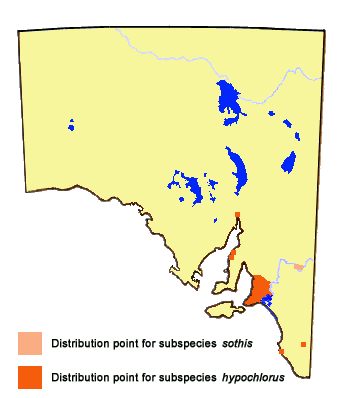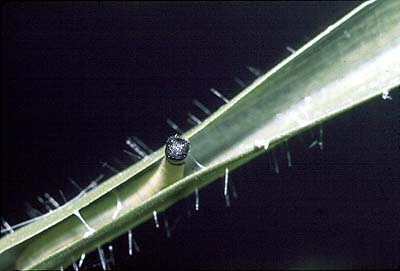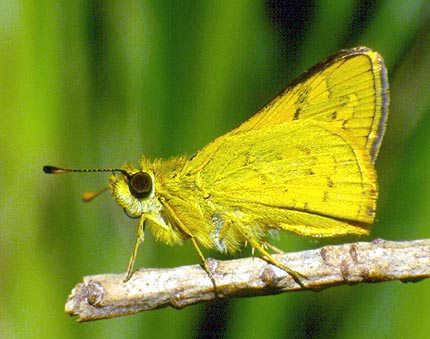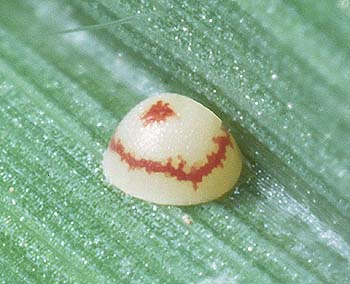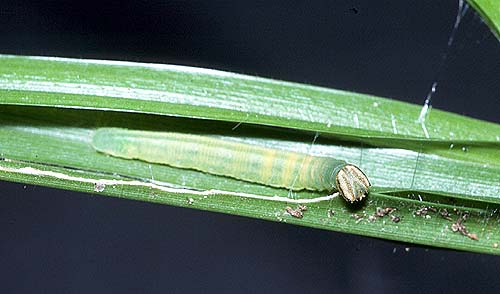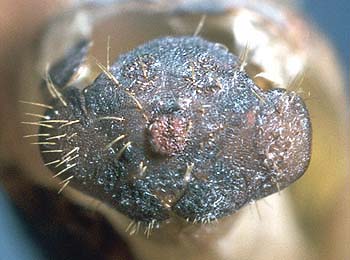Southern Grass-dart
Ocybadistes walkeri hypochlorus (Lower)
Greenish Grass-dart
Ocybadistes walkeri sothis (Waterhouse)
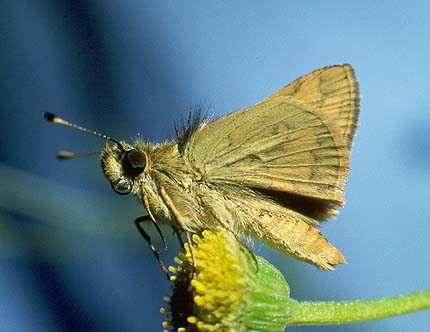
Interesting Aspects
This skipper belongs to a group of skippers (Hesperiinae) that are more at home in the hot tropics and subtropics. Along with Taractrocera papyria, it has adapted to cold temperate areas of Australia and Tasmania. The skipper, along with most others in the group, has a characteristic wing pose when settled in full sun, with the forewings being held vertical (or nearly so) while the hindwings are held horizontal (somewhat reminiscent of the FA-18 fighter jet).
The skipper occurs as two subspecies in South Australia. The subspecies hypochlorus is presently recognised as a separate relict population having its centre of distribution in the South Mt Lofty Ranges. Another subspecies sothis that occurs in similar moist habitat areas of Victoria, Tasmania, NSW and Qld, has been gradually extending its range westwards from southeast NSW and eastern Victoria, either by natural incursion or by accidental introduction on instant-lawn products or other fresh-cut grass hay products. Prior to 1970 the latter subspecies was unknown in central and western Victoria, although interestingly it has been known in Tasmania from historical times. Subspecies hypochlorus differs from subspecies sothis on the wing uppersides by having slightly more extensive orange-yellow markings, and the brown areas in new specimens are dusted with yellow scaling. On the hindwing undersides, the ground colour is yellow with only a faint green suffusion (distinctly greenish in sothis) and the postmedian band is indistinct.
The skipper flies in grassy areas just above the tops of the grass, and has a very rapid flight. Both sexes are fond of feeding from small herby flowers. Males will set up small territories in grassy habitat where they will wait with the characteristic open wing pose, but periodically will fly off to either check out nearby grassy areas looking for new females with which to mate, or to chase off other males. Females also fly in grassy areas, and have a slower flight when in an egg laying mode, and will periodically land on the grass to lay eggs or sun themselves, and will cover large areas looking for suitable grassy habitat to lay eggs. The skipper is easily approached with care when settled, but once in full flight they are quickly lost to sight due to their small size.

